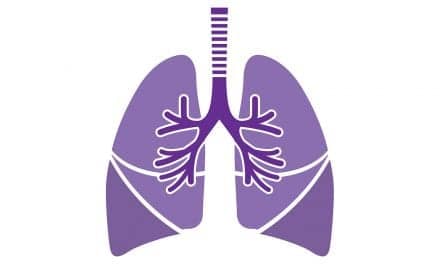Results of a prospective study published in the Sri Lanka Journal of Child Health found pulse oximetry-based critical congenital heart disease (CCHD) newborn screening strategy using Masimo SET pulse oximetry is a “simple, noninvasive, cost-effective, feasible, and reliable test,” and had higher CCHD screening sensitivity than physical exam.1
Combining the two methods led to detection of all cases of CCHD in the study cohort, and they recommended that, “Pulse oximetry screening as a combined strategy with newborn physical exam should be implemented as a basic routine at discharge for every newborn in maternity units island-wide.” As they note, their work is the first published CCHD study of this nature in Sri Lanka.
Noting that while “developed countries have abundant research on pulse oximetry screening” for CCHD, “there are few studies in developing countries,” Dr. CR Gunaratne and colleagues sought to study the utility of such a screening strategy in their local setting. From November 2018 to April 2019, researchers assessed the rate of detection of CCHD using Masimo SET pulse oximetry compared to routine physical exam alone in 5,435 asymptomatic newborns admitted to the post-natal wards at Castle Street Hospital, Colombo. Physical exam was performed at ≥ 24 hours of age “to identify any visible central cyanosis, weak/absent femoral pulses or cardiac murmur” by an experienced medical officer, blinded to pulse oximetry results. Radical-7 Pulse CO-Oximeters with Masimo SET pulse oximetry were used to measure pre-ductal and post-ductal oxygen saturation (SpO2) on the right hand and right foot, respectively, as part of a standardized screening algorithm. For newborns with positive results, an echocardiogram was performed within 48 hours to diagnose CCHD.
The researchers found that Masimo SET pulse oximetry had a CCHD detection rate of 91%, compared to 82% for physical exam. The addition of Masimo SET pulse oximetry to physical exam screening led to the detection of 2 cases missed by physical exam alone, with a combined detection rate of 100%. The positive predictive value and positive likelihood ratio were both higher for SET pulse oximetry compared to physical exam (71.4% vs. 8.6% and 1232.7 vs. 46.2, p = 0.0001). The researchers also found that the false positive rate was “substantially” lower for SET pulse oximetry compared to physical exam (0.07% vs. 1.76%, p = 0.0001).
The researchers concluded, “Prevalence of CCHD in our study was 2.02 per 1000 live births. Using a pulse oximetry strategy as an adjunct to routine physical exam can substantially reduce the diagnostic gap in CCHD as [a] combined approach has an additive effect resulting in more efficient screening.”
Since its introduction in 1995, Masimo Measure-through Motion and Low Perfusion Signal Extraction Technology (SET) has been shown in more than 100 independent and objective studies to outperform other pulse oximetry technologies, providing clinicians with increased sensitivity and specificity to help them make critical patient care decisions.2 To date, nine other published CCHD screening studies, all with positive conclusions and representing over 300,000 infants, have used Masimo SET,3-11 which includes the largest CCHD study to date, of 122,738 newborns.5 All of the CCHD studies with Masimo SET pulse oximetry have shown improved screening sensitivity with the use of Masimo SET alongside clinical assessment when compared to routine physical exam alone. Results from CCHD studies using other pulse oximetry technologies have shown that other technologies do not offer the same performance as Masimo SET during CCHD screening.12-14
With its ability to accurately measure through motion and low perfusion, alongside its performance in outcome studies, SET stands out as the choice of pulse oximetry technology for clinicians and policy makers hoping to implement newborn-related screening processes; and has indeed been used in the establishment of screening guidelines used around the world.15
References
- Gunaratne CR, Hewage I, Fonseka A, Thennakoon S. Comparison of pulse oximetry screening versus routine clinical examination in detecting critical congenital heart disease in newborns. Sri Lanka J Child Health, 2021; 50(1): 04-11. DOI: http://dx.doi.org/10.4038/sljch.v50i1.9393.
- Published clinical studies on pulse oximetry and the benefits of Masimo SET® can be found on our website at https://www.masimo.com. Comparative studies include independent and objective studies which are comprised of abstracts presented at scientific meetings and peer-reviewed journal articles.
- de-Wahl Granelli A et al. Impact of pulse oximetry screening on the detection of duct dependent congenital heart disease: a Swedish prospective screening study in 39,821 newborns. BMJ. 2009;Jan 8;338.
- Slitine N, et al. Pulse Oximetry and Congenital Heart Disease Screening: Results of the First Pilot Study in Morocco. Int J Neonatal Screen 6(53). 30 June 2020.
- Zhao et al. Pulse oximetry with clinical assessment to screen for congenital heart disease in neonates in China: a prospective study. Lancet. 2014 Aug 30;384(9945):747-54.
- Ewer AK et al. Pulse Oximetry Screening for Congenital Heart Defects in Newborn Infants (Pulseox): A Test Accuracy Study. Lancet. 2011 Aug 27;378(9793):785-94.
- de-Wahl Granelli A et al. Noninvasive Peripheral Perfusion Index as a Possible Tool for Screening for Critical Left Heart Obstruction. Acta Paediatr 2007; 96(10): 1455-9.
- Meberg A et al. First Day of Life Pulse Oximetry Screening to Detect Congenital Heart Defects. J Pediatr 2008; 152:761-5.
- Schena F et al. Perfusion Index and Pulse Oximetry Screening for Congenital Heart Defects. J Pediatr. 2017 Apr;183:74-79.
- Hamilçıkan S, Can E. Critical Congenital Heart Disease Screening With a Pulse Oximetry in Neonates. J Perinat Med. 2018 Feb 23;46(2):203-207.
- Jawin V et al. Beyond Critical Congenital Heart Disease: Newborn Screening Using Pulse Oximetry for Neonatal Sepsis and Respiratory Diseases in a Middle-Income Country. PLoS One. 2015; 10(9): e0137580.
- Tekleab AM, Sewnet YC. Role of pulse oximetry in detecting critical congenital heart disease among newborns delivered at a high altitude setting in Ethiopia. Pediatric Health Med Ther. 2019;10:83-88. https://doi.org/10.2147/PHMT.S217987.
- Narayen IC et al. Accuracy of Pulse Oximetry Screening for Critical Congenital Heart Defects After Home Birth and Early Postnatal Discharge. J Pediatr. 2018;197:29-35.
- Oakley JL et al. Effectiveness of Pulse-Oximetry in Addition to Routine Neonatal Examination in Detection of Congenital Heart Disease in Asymptomatic Newborns. J Matern Fetal Neonatal Med. 2015;28(14):1736-9.
- Kemper et al. Strategies for implementing screening for critical congenital heart disease. Pediatrics. 2011 Nov;128(5):e1259-67. doi: 10.1542/peds.2011-1317.
- Castillo A et al. Prevention of Retinopathy of Prematurity in Preterm Infants through Changes in Clinical Practice and SpO2 Technology. Acta Paediatr. 2011 Feb;100(2):188-92.
- Taenzer A et al. Impact of pulse oximetry surveillance on rescue events and intensive care unit transfers: a before-and-after concurrence study. Anesthesiology. 2010:112(2):282-287.
- Taenzer A et al. Postoperative Monitoring – The Dartmouth Experience. Anesthesia Patient Safety Foundation Newsletter. Spring-Summer 2012.
- McGrath S et al. Surveillance Monitoring Management for General Care Units: Strategy, Design, and Implementation. The Joint Commission Journal on Quality and Patient Safety. 2016 Jul;42(7):293-302.
- McGrath S et al. Inpatient Respiratory Arrest Associated With Sedative and Analgesic Medications: Impact of Continuous Monitoring on Patient Mortality and Severe Morbidity. J Patient Saf. 2020 14 Mar. DOI: 10.1097/PTS.0000000000000696.
- Estimate: Masimo data on file.
- http://health.usnews.com/health-care/best-hospitals/articles/best-hospitals-honor-roll-and-overview










